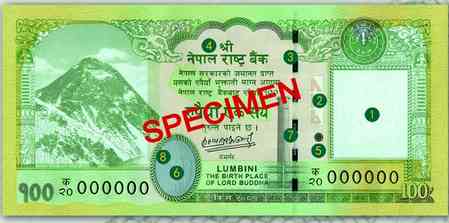Søke Forbrukslån: What You Need to Know Before Applying for a Loan
Applying for a loan typically involves providing various documents to the lender. These may include credit card statements, paystubs, W-2 forms, 1099s and tax returns depending on your lender.


Applying for a loan typically involves providing various documents to the lender. These may include credit card statements, paystubs, W-2 forms, 1099s and tax returns depending on your lender.
Lenders typically consider applicants' credit score, debt-to-income ratio and other financial profiles when reviewing loan applications. Some lenders have more lenient criteria for low credit applicants while others require higher scores from them - so to learn what you have to do to ensure you get accepted, read on.
1. Determine Your Needs
Borrowing money should never be done purely for its own sake; however, borrowing to buy a home, finance an education loan, expand a business or make repairs and improvements can often make sense. Before even søk for a loan, first assess your needs and gather documents as required before proceeding with your application. It’s important they’re in order before you begin.
Lenders consider more than your credit score when assessing whether or not you qualify for a loan; they also assess how much debt and disposable income you have as part of their decision. What type of loan (like these) and interest rate you qualify for depends on how much debt is available; lenders take this factor into consideration as part of their approval decision as well. To increase your chances of loan approval, take steps to improve your credit score - for instance paying bills on time while keeping credit utilization low.
Document your employment status and income. Whether working full-time for an employer or having side hustles, most lenders require pay stubs as proof of income; self-employed applicants should include documentation of any other sources (like rental income or dividends ).
Lenders will also require banking information in order to ascertain your financial stability, such as recent bank statements and linking your account using services like Plaid in order to see how much money is coming in. They might also ask for copies of current business and personal credit cards so they can assess your debt levels and creditworthiness.
If you need a loan for your small-business venture, be sure to visit state and local economic-development agencies as well as nonprofit organizations for loans that may not qualify under commercial loan programs. These organizations typically provide financing solutions tailored specifically for small businesses that might otherwise go unnoticed.

2. Gather Documents
Before applying for any type of loan - be it personal, mortgage or otherwise - there will often be an extensive list of documents you must gather before meeting with lenders. While each lender has unique requirements for documentation submission, the following items are likely essential: your credit report, financial statements and bank statements. It's wise to take your time compiling these items ahead of meeting with a lender so you know exactly what they require of you.
Most personal loans require proof of identity in the form of government-issued photo ID such as a driver's license or passport and utility bill, lease agreement or bank statement showing both borrower's name and current address. Lenders may also request tax returns or W-2 forms as proof of income verification.
Lenders looking for business owners will require current profit and loss statements including any supplementary schedules from the last three fiscal years, cash flow statements and balance sheets, along with knowledge of local markets, competitors and projected future revenues and growth strategies for your company.
When applying for a mortgage loan, additional documents may be required of you, including pay stubs or W-2 forms to verify income; tax returns and employment history information; as well as bank statements to show available equity in the home. Lenders will also review your debt-to-income ratio and property value/location details.

3. Complete the Application
Once you know why you require a loan and how much is necessary to borrow, the next step should be completing an application - either online or through an app like Fi Money. In either case, your personal and financial details along with necessary documents will be used to assess both creditworthiness and loan-repayment ability.
Your contact details, bank statements and tax returns as well as a list of debts will all need to be provided along with copies of driver's licenses and proof of identities for verification purposes. When applying for a mortgage you'll also need property details along with additional documentation like land registry certificates.
A lender will perform a credit check and consider all four C's: capacity to repay, capital (cash available), collateral and credit score when making their decision about size and interest rate for loans. They'll also look at your income and whether you can afford monthly EMI payments. Honesty on an application for loan financing is also always best; lying will quickly get your application denied and can damage both your credibility and reputation in the future.

4. Get Approved
Once you've conducted your research and selected a lender with terms that meet your needs, the next step should be filling out an official loan application. This generally involves providing personal identification details as well as income/employment data as well as your purpose statement for consideration by lenders. They may request supporting documents, such as copies of government-issued ID (https://www.usbirthcertificates.com/glossary/government-issued-id) and financial institution statements which provide evidence that supports both your address and stated income.
Application processes vary between lenders, but typically can include applying online, over the phone or in person at one of their branches. Some lenders will perform a soft credit check to assess eligibility before asking for more detailed information from you, while others may require that a full loan application be submitted which will result in a hard inquiry on your credit report.
Before finalizing your application, be sure to thoroughly research all of the lender's rates and terms to see if they meet your budget needs. Keep in mind that any prequalification you may receive depends on factors like your credit history, income and debt-to-income ratio - it doesn't reflect a definitive list of loan terms you could potentially be offered should your application be accepted.
Once your official application has been accepted by a lender, it can take several days before funds arrive in your account to use for planned expenses.
If your loan application is denied, it's important that you understand why. If it was due to low credit score issues, perhaps seeking out a cosigner can increase the odds of approval or working on raising it before reapplying again.
At the same time, it's wise to avoid applying for multiple loans; each hard inquiry on your credit report creates new hard inquiries that could further lower your score. If you cannot qualify for a personal loan, other alternatives include credit-builder loans or alternative financing sources like an auto equity line of credit or peer-to-peer lending platform. In the meantime, try saving or cutting back spending in order to free up funds for more expenses down the road.


 City Air News
City Air News 










